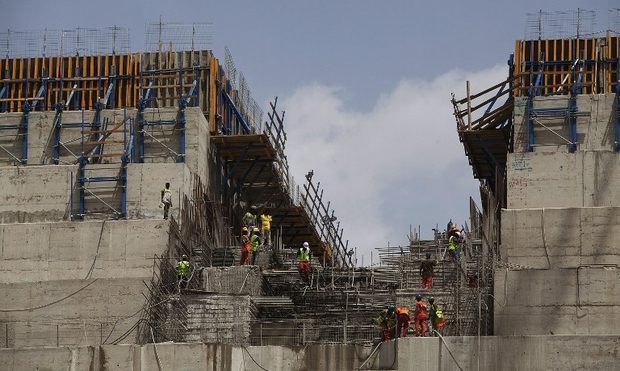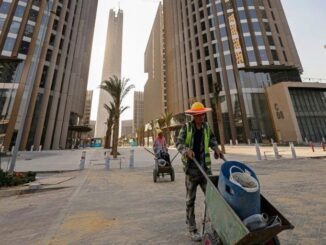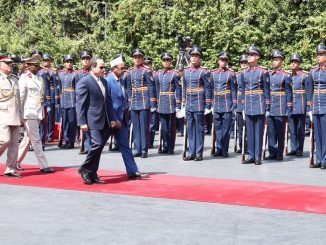
Al-Jazeera has published an opinion article by Abdel Nasser Salama, former editor-in-chief of Al-Ahram, Egyptian government-owned newspaper, under the title, “The Missing Truth in the Ethiopian Dam Crisis” that will be reviewed hereunder.
“We must consider these dates carefully, so that we can understand what has happened over the past seven years,” Abdel Nasser Salama said while introducing his article, adding:
On 7/3/2013, former President Mohamed Morsi was overthrown, then on 7/5/2013, that is, two days later, the African Union suspended Egypt’s AU membership, on the grounds that what had happened was a coup against legitimacy. On 6/8/2014, less than a year later, Abdel Fattah Al-Sisi was sworn in as President of Egypt, then on 6/17/2014, that is, nine days later, the African Union decided to reinstate Egypt’s AU membership. On 3/23/2015, Al-Sisi signed the Declaration of Principles related to the Grand Ethiopian Renaissance Dam (GERD), in the presence of a representative of the World Bank.
“We must also bear in mind the two years preceding those events, specifically since the events of January 25, 2011 in Egypt,” Salama said.
“It should be noted that the Ethiopian dam has been a hope haunting the Ethiopians since the sixties of last century, during the era of President Gamal Abdel Nasser, with Israeli and Western provocation on the one hand to take revenge on Egypt, and by the Egyptian Church on the other hand to put pressure on the Egyptian government, but the Egyptian strong role in the African continent at that time it prevented it. This situation continued throughout the reign of President Anwar Sadat and President Hosni Mubarak, who refused to even negotiate this issue, realizing the importance of the Nile in the lives of Egyptians, on the one hand, and in recognition of the threat it poses to the Egyptian national security in general on the other,” the former Al-Ahram chief editor added.
Abdel Nasser Salama outlined the successive events that occurred later in 10 points, as follows:
1- The idea of the project resurfaced strongly again in 2010, while the actual implementation began in 2011, based on Israeli recommendations confirming that major changes would take place in Egypt during that year.
In response, Egypt formed a committee from the Ministries of Foreign Affairs, Interior, Defense, Irrigation and Electricity, to follow up and study the issue. In this context, President Hosni Mubarak asked Sudan at the time to allow establishment of a military base that Egypt would use if Ethiopia began implementation on the ground.
2- With the events of January 2011 in Egypt, the reign of the Supreme Council of the Armed Forces (SCAF) specifically, Ethiopia began preparing the ground for the project, and communicated with international expertise offices in this regard, without any response from SCAF, despite the fact that SCAF was the actual ruler of the country at all levels.
3- Ethiopia did not find funding of any kind for the dam at that time, other than opening the door for internal subscription from its own citizens, and forcing local banks to contribute loans with easy interest; and then opened the door for subscription from Israelis, and ads were published in Israeli newspapers and the streets in Tel Aviv and elsewhere under the title (Together Against Egypt, bringing the total funds that Ethiopia had collected over the three years, slightly less than a billion dollars, which is not enough to establish a project of the size of GERD that needed five billion dollars at the very least.
4- On 6/3/2013, former President Mohamed Morsi chaired a national dialogue session, to which he invited various political parties, forces, Al-Azhar and the Church, to discuss the impact of the dam on Egypt. Morsi then said: Ethiopia is still in the preparatory phase for the construction of the dam, now they are in the first stage, that is preparation for construction, the second phase is the construction and storage phase, and the third phase is the management phase; so we must participate in the three phases, because the management phase includes implementation of what has been agreed upon, that is the agreement that must include everything through international parties. Morsi also said that the Ethiopian Prime Minister told him that Egypt would not be harmed by a single glass of water, but Morsi said: “We do not want to leave the matter to verbal promises.” It should be noted that this session was broadcast live by sovereign bodies without the knowledge of the presidency at the time!
5- On April 23, 2014, under the interim President Adly Mansour, a sudden decision was issued by the European Union, Russia, China and the World Bank, to suspend financing the Ethiopian dam, considering that such investment is not safe due to differences with the two downstream countries – Egypt and Sudan. Indeed, international loans worth $ 3.7 billion have been frozen.
6- With the Egyptian presidential elections approaching, there were Saudi-Emirati contacts with Ethiopia, which had headed the African Union throughout 2013, to lift the sanctions on Egypt and reinstate its AU membership, and here was the beginning of a series of concessions and plots at the same time.
These plots began with a donation of $ 88 million by Saudi businessman Mohamed Al-Amoudi to construct the dam, followed by a series of Saudi investments that amounted to five billion dollars, and Emirati investments amounting to 3.2 billion. All this culminated in Abdel Fattah al-Sisi’s signature of the Declaration of Principles, that did not stipulate Egypt’s historical rights in the waters of the Nile on the one hand, and granted legitimacy to the dam on the other, as the international decision to suspend financing the dam became meaningless, and various capitals and the World Bank rushed to provide the necessary funding.
7- As soon as Sisi signed the Declaration of Principles, he immediately began working domestically on three axes, namely, canal lining, sea water desalination, and sewage water purification, through multiple, giant and very expensive projects.
This indicates that Sisi was fully aware of the consequences of his signature on the DoP, which would deprive Egypt of its share in the Nile waters. This also indicates that all the negotiations in which Egypt participated, from Addis Ababa, to Khartoum, to Cairo, to Washington, over a period of six years, from 2015 to 2021, were useless, and that the status quo has imposed itself.
8- The presence of Israel as a party in this case, from its inception, makes us think about the conspiratorial selection of the dam site, as many studies indicated that the dam in this location is likely to collapse once the filling process is completed, or perhaps before that, as a result of any coming earthquake, in addition to the many technical defects in design and construction. Thus, the threat of drowning and destruction of both Egypt and Sudan is no less than the threat of drought and water scarcity.
9- Although there is unprecedented Egyptian popular support and momentum for any military operation aimed at destroying the dam, in recognition of the danger this situation would pose to future generations, and the Egyptian presence in general, the street was preoccupied with programmed distractions, which were crowned with Ramadan series, along with announcement of useless alternative projects for the Nile water.
10- Ethiopian President Sahle-Work Zewde was smarter than everyone else when she immediately stated that Sisi’s message from the Suez Canal (Nile water is a red line, and whoever wants to try let him try) was not directed at Ethiopia, but rather addressed to the Egyptian people.
Then came the statement of the US State Department, calling on parties to the conflict not to act unilaterally, thus putting an end to any likely Egyptian military action towards the dam.



